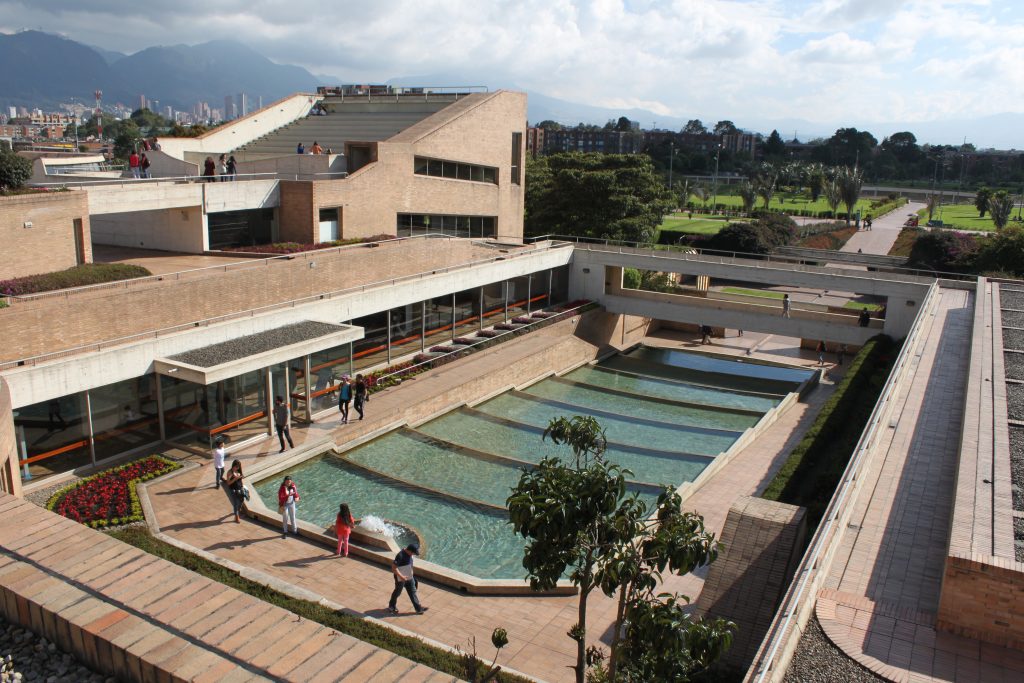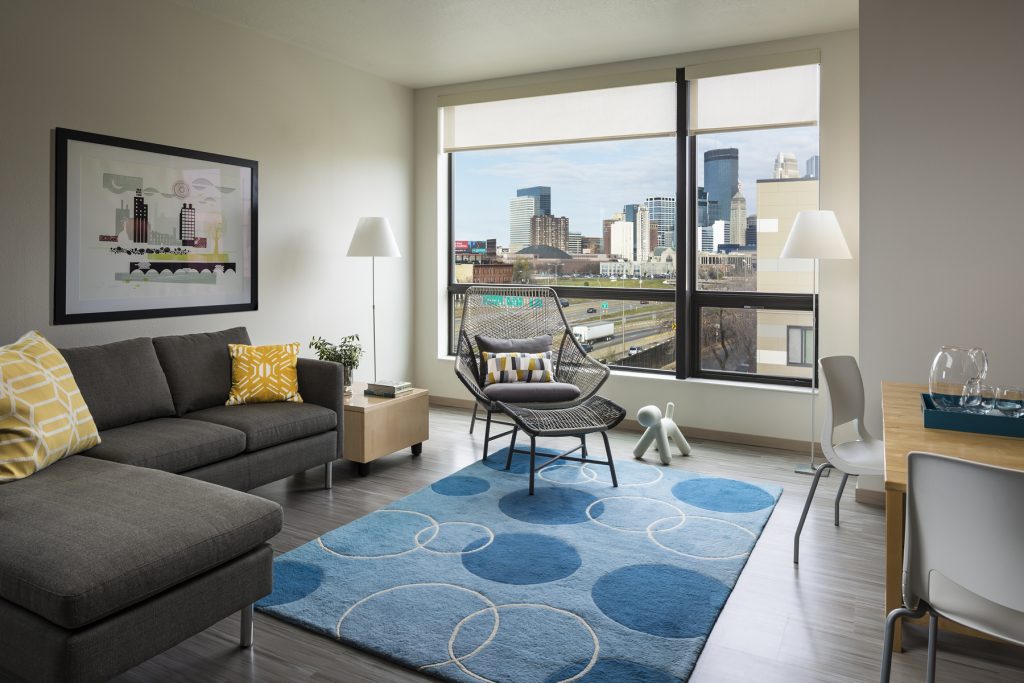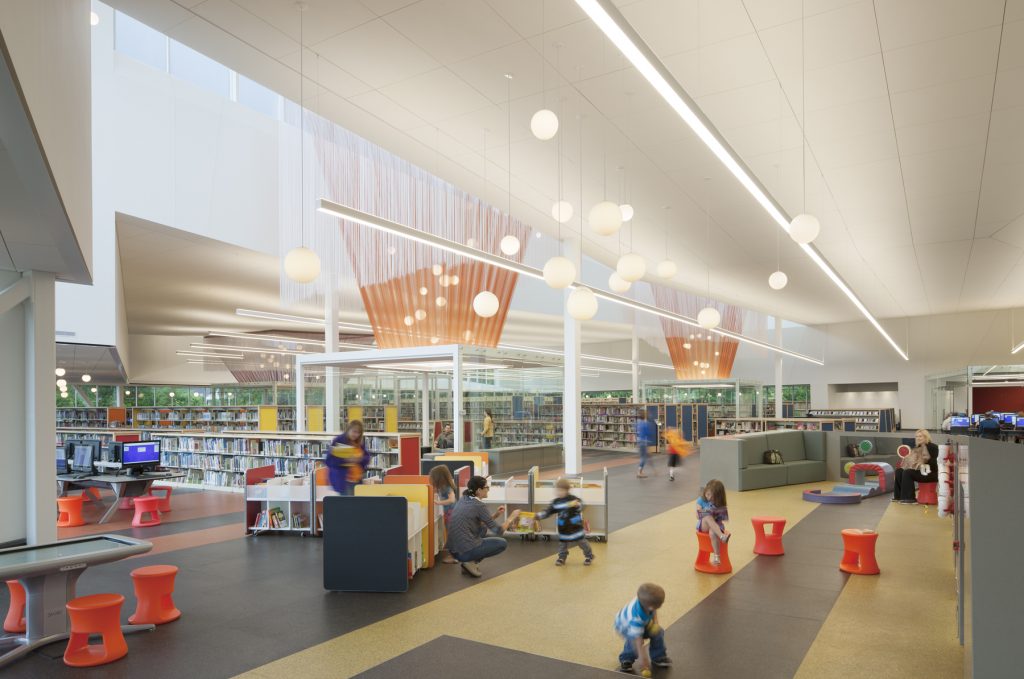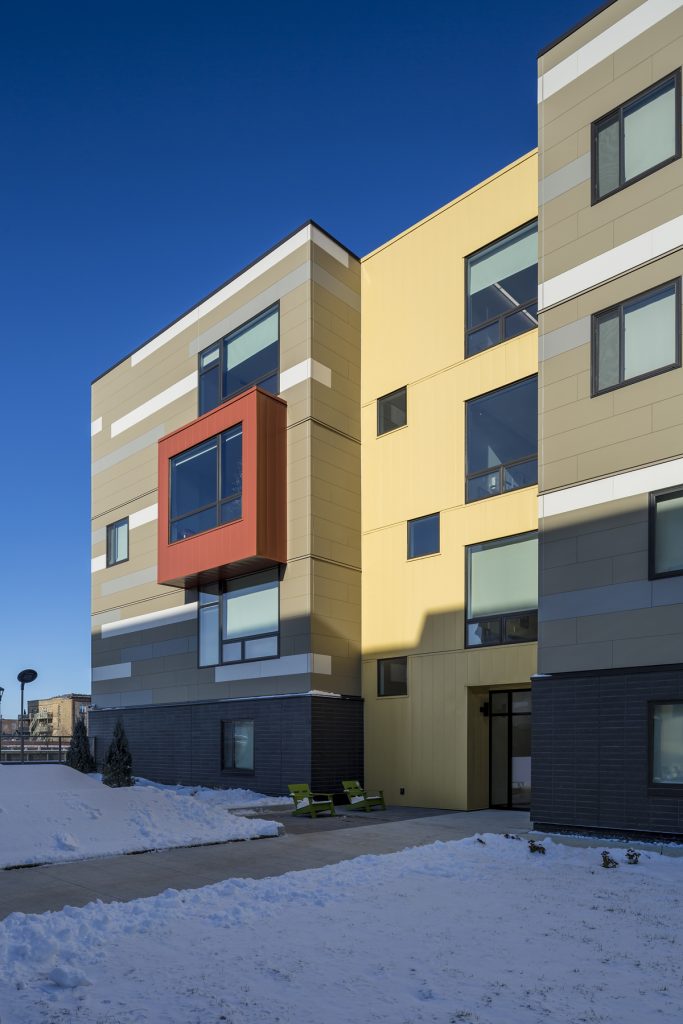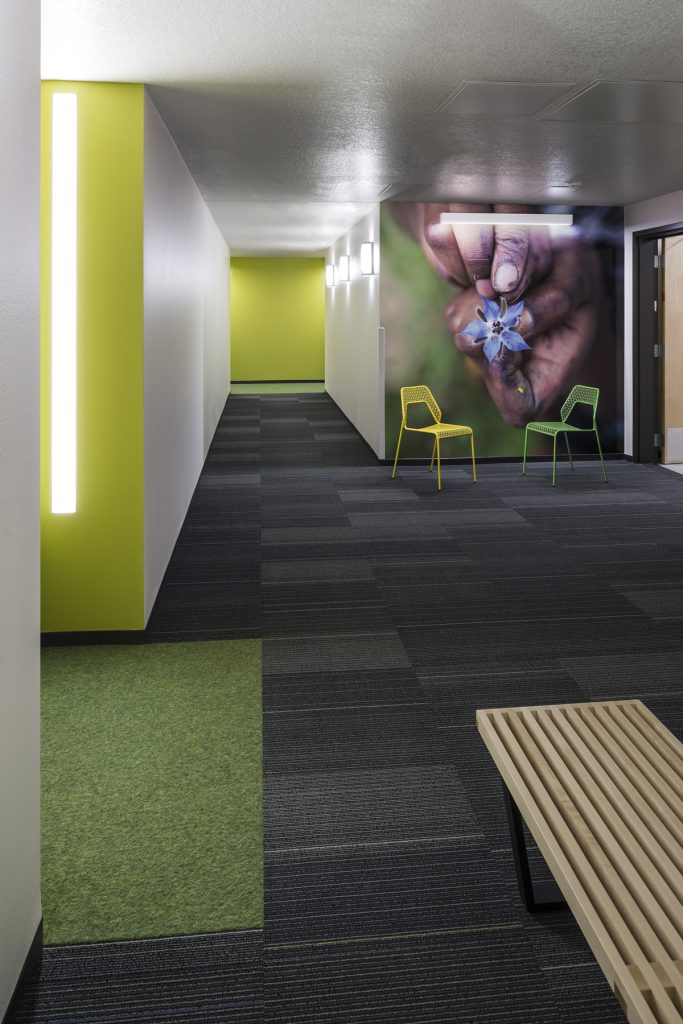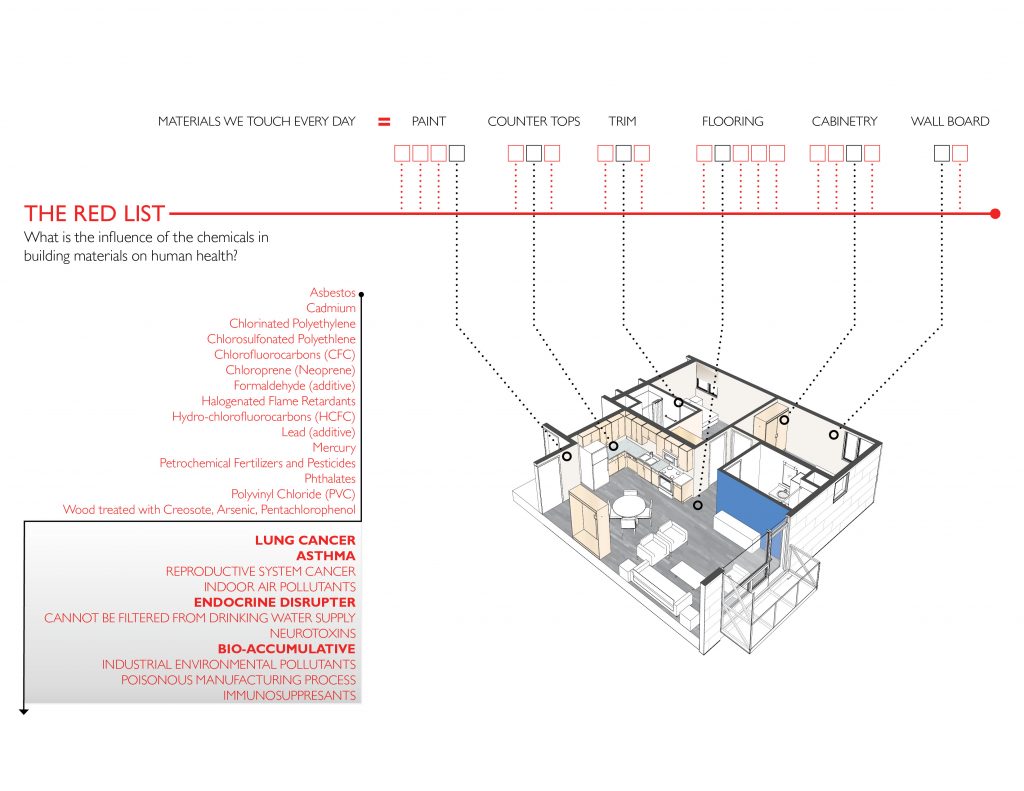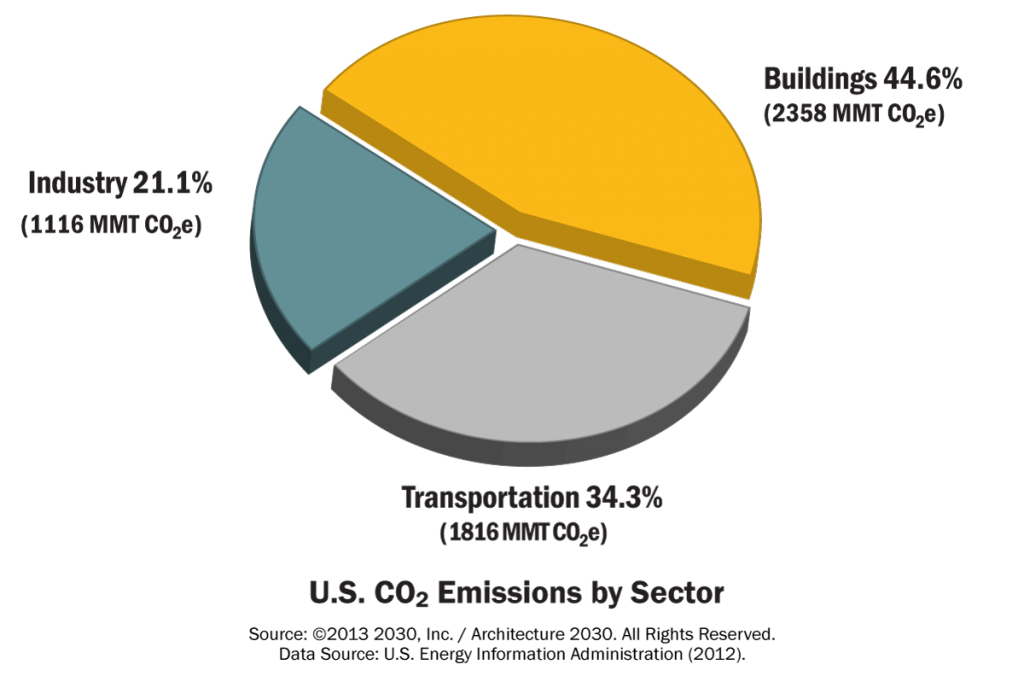Colombia’s history
Given annually by Lea and Jeff Scherer (MSR emeritus principal), the Scherer Travel Scholarship is awarded to an MSR employee, based on a proposal that demonstrates how a proposed travel experience will benefit the office and society, as well as enriching the individual. In this first blog post (in a series of three), scholarship recipient Kate Michaud shares about her experience in Colombia.
As a recipient of the 2016 Scherer Travel Award, I chose to travel to Colombia to learn more about how urban design has helped improve the lives of the average person. This past January my husband and I set off to explore Bogota and Medellin.
To understand how Colombia became synonymous with drugs and violence, it’s important to understand its recent history. In 1948, a presidential candidate was assassinated in Bogota, and the ensuing riots started a 10-year period called “La Violencia.” The initial conflict ended with a power-sharing agreement between the liberals and conservatives that did not include a seat at the table for the communists. This slight by the mainstream political parties led the communist peasant groups to morph into left-wing guerilla groups (inspired by the Cuban revolution).
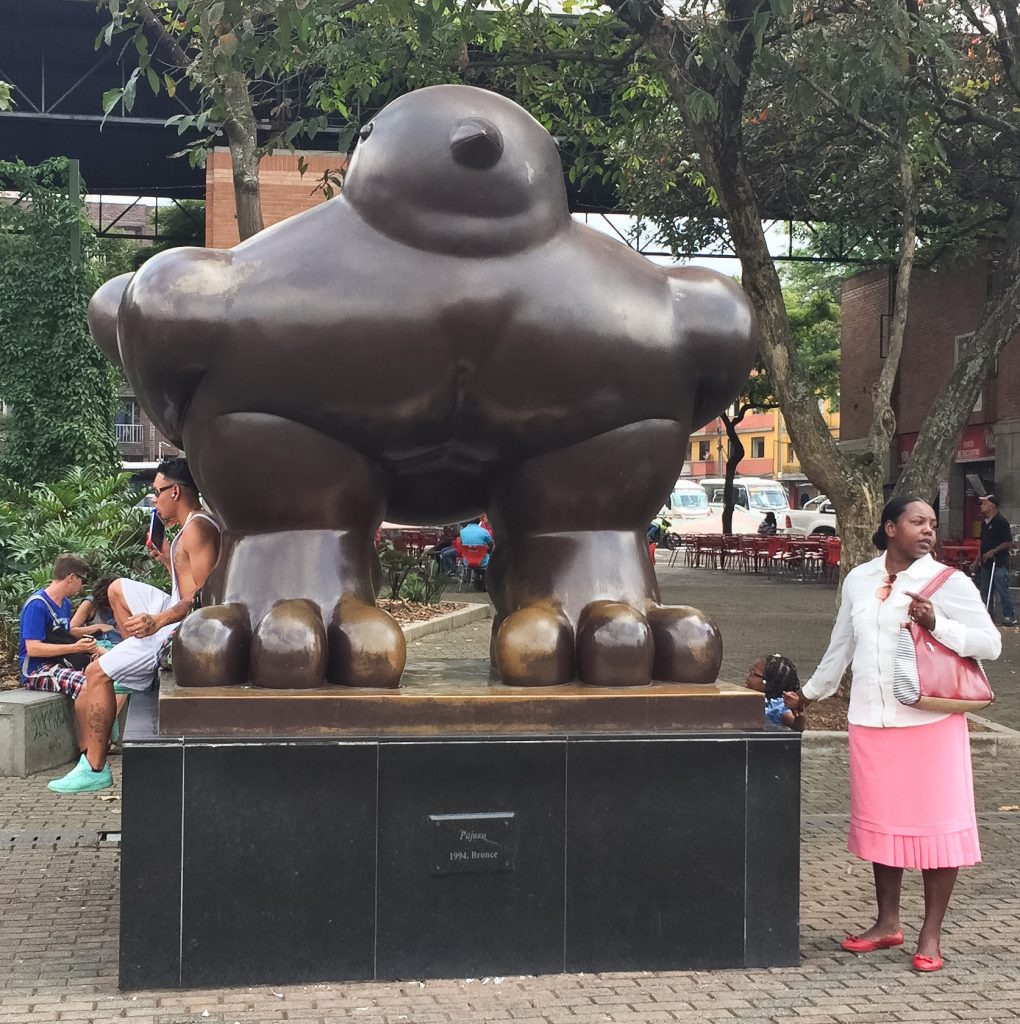
Over time, the conflict between the guerilla groups and the government led to destabilization in certain areas of the countryside. To protect their land and other assets, wealthy landowners began to back right-wing paramilitary groups that were multiplying across the countryside.
The Colombian drug cartels entered the scene in the 1980s. The cartels worked with both the guerillas and the paramilitaries to protect their coca fields and power within the government. By 1990 Medellin had the highest murder rate in the world. Murders, car bombings, and kidnappings were all too familiar news stories. While in Medellin, we visited Fernando Botero’s Pajaro de Paz (Bird of Peace) sculpture. The sculpture was damaged in a 1995 bombing that killed 23 people. Afterwards, Botero sent a replacement to the city, and today it stands next to the damaged bird as a symbol of hope.
Since 1985, over 220,000 people have been killed as the result of the conflict. Three quarters of these murders have been civilians. Also during this time, five million Colombians have been displaced from their homes. Colombia is second only to Syria in the number of internally displaced citizens. To get a better understanding of the conflict, we visited the Museo Casa de Memoria. Part memorial, part museum, and part archive, the Museo is as much about remembering the atrocities of the past as it is about making sure they are not repeated. One of the exhibits featured an interview with a former FARC member who recounted her story of joining FARC, being captured by the authorities, and her subsequent reintegration into Colombian society. Listening to someone my own age tell this story was very sobering.
During the times of extreme violence, the mayors of Bogota and Medellin began to imagine a better future for their cities and they began to take small steps to improve the lives of their citizens. Bogota mayor Antonio Mockus famously hired mimes to mock those who disobeyed traffic laws. Mayor Enrique Penalosa pushed forward major transportation, school, library, and park projects.
On our trip we were able to see many of the new infrastructure and community spaces firsthand.

Bogota “mejor para todos”
Bogota is Colombia’s high-altitude, fast-paced, and extremely dense capitol city. With a population of eight million crammed into a mountain valley, it has approximately 18,000 people per square kilometer. This density is much higher than the 3,000 people per square kilometer who reside in the City of Minneapolis. To move all of these people around the city and relieve traffic congestion, Bogota created the “Transmilenio.” This bus rapid transit system has 12 lines that extend across the city, reaching into rich and poor neighborhoods. Articulated buses use dedicated bus-only traffic lanes. The stations more closely resemble a subway or tram station than a bus stop. Patrons pay when entering the station, and multiple doors open simultaneously for faster boarding and exiting. I have used bus rapid transit in other cities and countries, but Bogota’s system was by far the most comprehensive (and the fastest).
After a few days of cramming ourselves onto crowded Transmilenio buses, it was a relief to wake up on Sunday morning, rent some bikes, and enjoy the Ciclovia. During this weekly event, the city closes 120 km of streets to traffic from 7 am–2 pm and opens them to pedestrians and cyclists. What’s even more impressive is that the network of streets that close are spread evenly throughout the city and are most often major thoroughfares. Food vendors, bike maintenance stands, and different kinds of entertainment line the streets along the route. Former parks director Gil Penalosa has described the Ciclvoia this way:
“In Bogotá, the gap between these people is great, but that’s the case in other cities as well. But through the Ciclovía, they are in the same place, doing the same thing. These are people who don’t live in the same neighborhoods, their kids don’t attend the same schools, they don’t shop in the same stores, and they don’t eat in the same restaurants. But they are in the Ciclovía together. One can have an imported bike that is three thousand dollars, while the other has one that is 30 dollars…so be it. They are both having the same fun with their family, and they stop and chat. It’s a rare activity that can allow this integration to happen.”
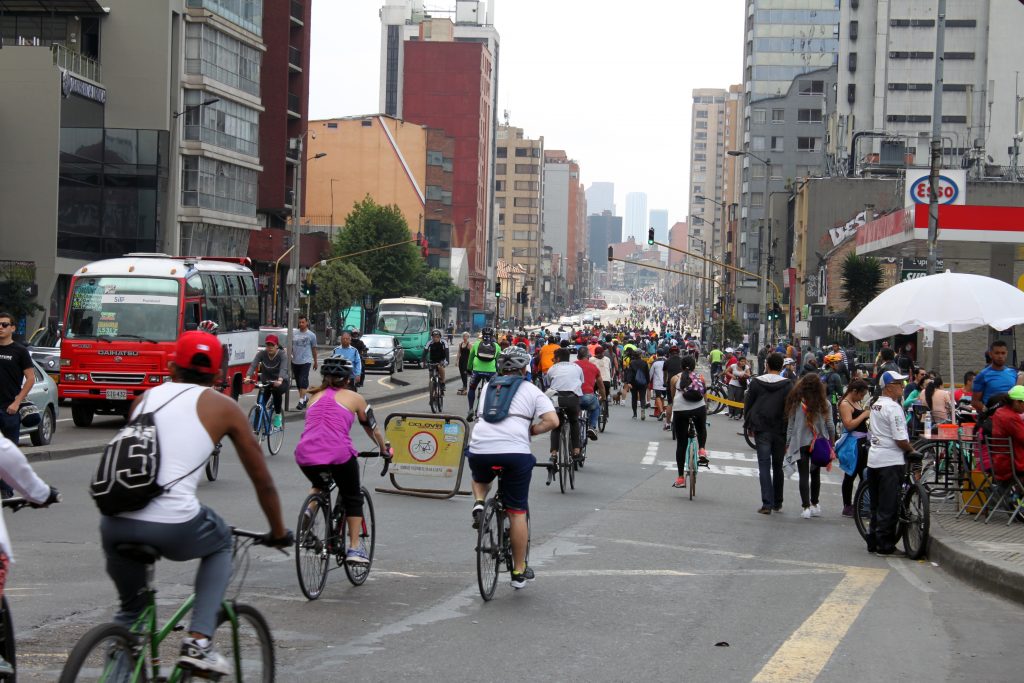
This weekly festival is very popular in Bogota and has spread to other cities across the globe. Minneapolis and Saint Paul’s Open Streets are a prime example.
In the late 1990s, the city made a push to promote reading, writing, and culture by starting the BiblioRED program to construct new libraries throughout the town. We visited the La Esmerelda neighborhood to see the Biblioteca Vigilio Barco, designed by Rogelio Salmona. This exquisite, 21st-century library offers a large, day-lit reading room with spaces for group and individual study. Accessed across a bridge over a water fountain, the children’s library includes space for storytimes and low, child-viewing level windows. The building also houses a café, community rooms, art gallery, and an auditorium for performances. The views into the surrounding public park and the mountains beyond are spectacular; and most of the building is open-air to take advantage of Colombia’s temperate climate. The building feels like an extension of the park; very open and inviting for everyone. During our visit, groups of people were studying in the reading rooms, an art show about the peace process was on display, and teenagers were having a costume salsa dance party.
Bogota wants to transform itself into a sustainable and inclusive city. Meeting these goals is going to take an enormous amount of work. From my time spent there, I believe they are up for the challenge.
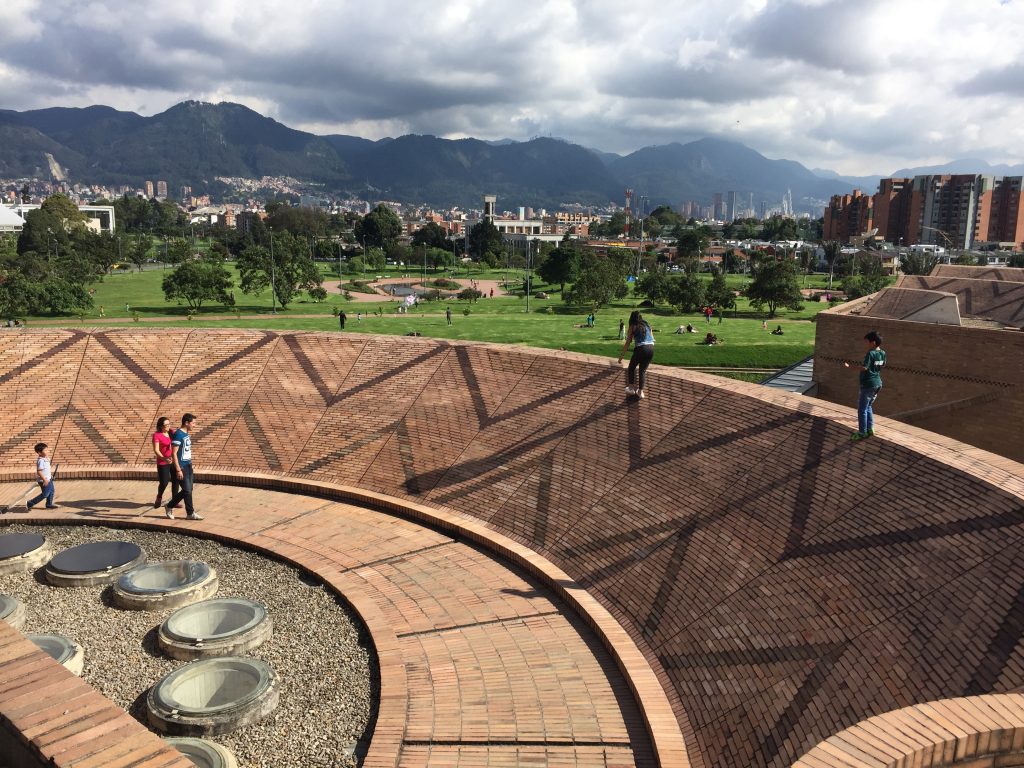
Medellin “trabajamos por vos”
More than any other city in Colombia, Medellin has made a dramatic transformation over the past decade. In the 1990s, the city had the dubious distinction of having the highest murder rate in the world. Bombings in public parks and fights on the street between drug cartels and the police diminished Medellin’s public life. “For me, 1991 was a key turning point for the whole country. It was the worst and the best moment—a time of complete crisis and a moment of hope,” Catalina Ortiz (Colombian architect) says. “It was truly a moment where everyone felt it could not get any worse—we had to do something.”
In 1991, a new constitution was written to give more power to localities. Most notably, they now had the right to elect their own leaders. Medellin had a series of influential mayors during this time who realized that the violence in the city couldn’t be addressed through policing alone. They began to look at the role public spaces and transit could have in helping rebuild the city’s sense of safety and community.
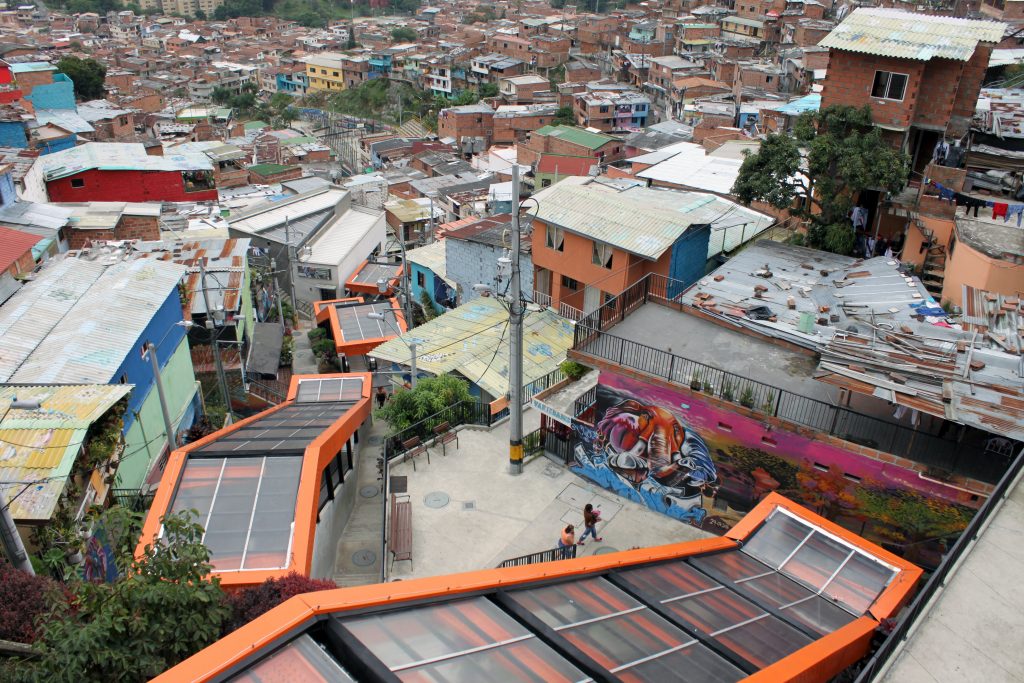
One of the first radical transit projects completed in Medellin were the Comuna 13 escalators. This neighborhood was one of the most crime-ridden in the city. The steep hills and winding roads made it hard for both residents and police to traverse parts of the neighborhood. These six new escalators climb 384 meters up a steep hillside. What was once a 34-minute uphill hike has become a six-minute ride. Houses on either side of the escalators have been painted with murals by Medellin’s street artists. City employees are stationed at each level to assist residents and monitor the escalators. At the top of the hill sits a community center with meeting and classroom spaces for the public.
To bring public transit into Medellin’s other steep hillside comunas, the city built a gondola lift system called the Metrocable. The first line opened in 2004 in the Santo Domingo neighborhood—an area with hills so steep that even short buses common in other neighborhoods could not fit on the winding streets. This condition meant trips to downtown Medellin could take up to two hours because residents would have to walk uphill from the metro station at the bottom of the valley. With the Metrocable, the trip is now 30 minutes and costs only 80 cents, which is considered affordable for most Medellenos. In 2008, the second Metrocable line was added in Comuna 13, and another two lines are expected to open this year.
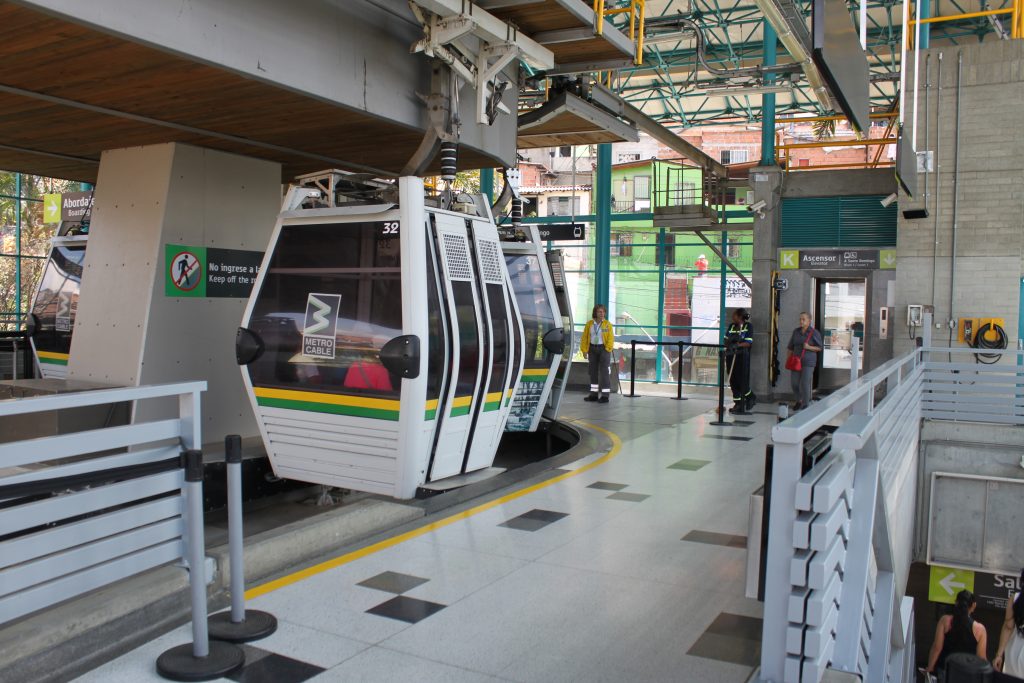
As a tourist, the best way to explore the city is taking a ride on the Metrocable. It offers incredible views of the city, and you’re able to see neighborhoods up close, which would be extremely difficult to see under other circumstances. As you climb uphill, the streets get narrower until they are replaced by sidewalks, and eventually those sidewalks are replaced by dirt paths.
In addition to making it easier for neighborhood residents to travel out of the neighborhood, the Metrocable also makes it easier for the city to bring in services. Community centers, health centers, and library parks have opened near the stations. Medellin has opened 10 library parks since 2005, mostly in previously under-served portions of the city. The library parks feature enhanced community amenities, such as meeting rooms, classrooms, computer labs, and offices where residents can access city services. They share a site with recreational fields, community gardens, and playgrounds. City officials made good design a priority for these buildings. They wanted the spaces to convey “education with dignity.” Locals call them the “sexy libraries.”
Medellin is working to improve the lives of its residents. “Trabajamos para Vos” (we work for you) is the city’s motto. Medellenos do not dwell on their past. They are all pushing for a better future in a way that seems to permeate the entire city.
